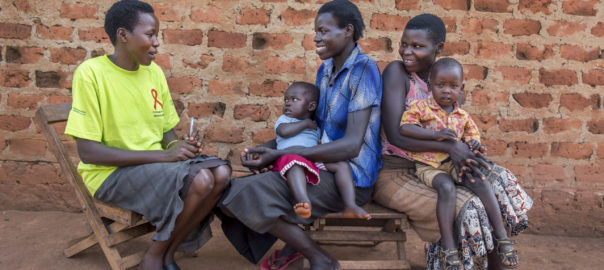Reproductive Calendar Data Now Available in Easy-to-Use Format from IPUMS DHS

For many DHS Program surveys, interviewers collect reproductive calendar data from women of childbearing age. These retrospective data provide a month-to-month history of a woman’s reproductive events during the preceding five years. Researchers use the calendar data for many purposes, such as exploring the reasons for contraception discontinuation, identifying discrete clusters of women based on contraceptive and pregnancy behaviors, or estimating variations in fecundity over time and across countries. The latest release from IPUMS DHS makes it easy to use these incredibly valuable (but complex) data, whether researching one sample or making comparisons across many samples.
Understanding the calendar data. For every month of the calendar period, the calendar data document whether a woman gave birth, was pregnant or terminated a pregnancy. For many samples, the monthly record also indicates whether the woman used a (specified) contraceptive method and, if she stopped using a method, the reason for stopping. Some samples collect additional information, such as the woman’s union status, employment, and the type of pregnancy termination.

Using IPUMS to simplify working with the calendar data. IPUMS DHS now provides calendar data as a separate unit of analysis, referred to as “woman months.” The calendar data available for IPUMS DHS are recoded from the standard coding system for DHS Phase VII as a starting point. IPUMS DHS staff also consulted DHS Program Final Reports to determine the meaning of country-specific responses and gave all responses consistent numeric codes.

Using “woman months” in IPUMS DHS simplifies analyzing calendar data in the following ways:
- No need to de-string the data; just log in to IPUMS DHS with your email address and the password you use to download DHS Program data and choose “woman months” as the unit of analysis. Each observation will be a month in the five years prior to the interview.
- A given code (e.g., for a particular contraceptive method or reason for stopping use) always has the same substantive meaning across all samples in IPUMS DHS.
- In IPUMS DHS, all codes have numeric values, which are easier for computer programs to process.
- All other variables related to the woman’s characteristics can be included in your customized data file. Thus, you can easily analyze how the woman’s education or age, for example, relates to her choice of contraceptive method, consistency of use, or reasons for stopping.
For more information about the calendar data in IPUMS DHS, including a discussion of how the original string data were transformed and a summary of the calendar variables, consult the IPUMS DHS Calendar Data User Guide.
Special thanks to our guest blog contributors, Elizabeth Boyle and Miriam King!

Elizabeth Heger Boyle is Professor of Sociology & Law at the University of Minnesota. She studies the role of international laws and policies on women and children’s health around the world. She has written extensively on the impetus for and impact of laws related to female genital cutting, including the book Female Genital Cutting: Cultural Conflict in the Global Community. Her current research focuses on abortion policies globally and their effects; this includes a 2015 article in the American Journal of Sociology. Professor Boyle is currently co-Principal Investigator (with Dr. Miriam King) on IPUMS DHS, a National Institute of Child Health and Human Development grant that integrates Demographic and Health Surveys over time and across countries to make them more user-friendly for researchers. Professor Boyle has a Ph.D. in Sociology from Stanford University and a J.D. from the University of Iowa.

Miriam L. King is a Senior Research Scientist at the Institute for Social Research and Data Innovation at the University of Minnesota. She has managed data integration projects on the U.S. Current Population Survey, the U.S. National Health Interview Survey, and, most recently, the Demographic and Health Surveys. Her research has focused on the history of the U.S. census, data integration methods, U.S. historical fertility differences, living arrangements, and disparities in access to insurance for same-sex couples. Dr. King has a Ph.D. jointly in Demography and History from the University of Pennsylvania.
Featured image by © Jonathan Torgovnik/Getty Images/Images of Empowerment

